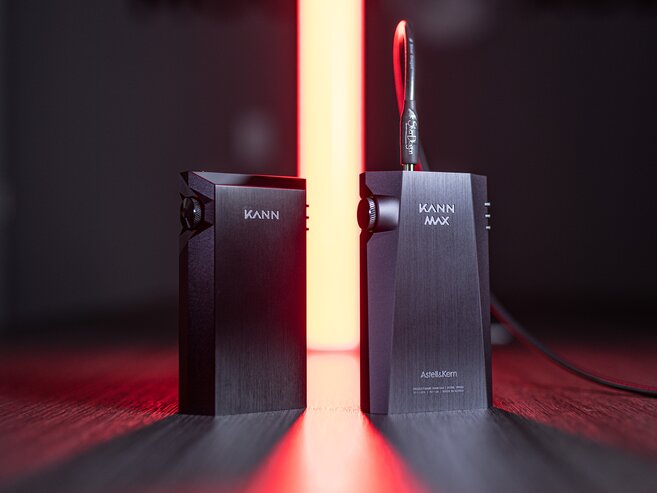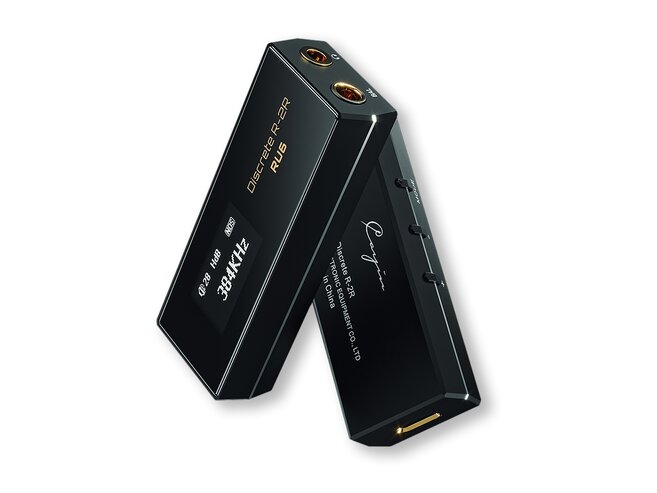Read Time: Approx. 15 min.

Of all the questions we get here at Moon Audio, one of the most popular is "What is a DAC?" It's an honest question because if you're new to the audiophile world or need individual components for your audio system, it's easy to get confused about all the different technicalities of the hobby. DACs are an incredibly important part of your audio system, and as we'll see, there's quite a rabbit hole you can go down when considering what they do, how they do it, and the various types out there. Welcome to your DAC rabbit hole, where we'll go over everything you need to know about how DACs work, what they do, the different types, and how to pick the perfect DAC for your hi-fi audio system.
The DAC is a necessary ingredient to the audiophile recipe. It's one of those components that you can't do without if you're trying to listen to digital music. There are many different kinds of DACs out there, and an infinite number of questions that can be asked about them. Let's go over a few of these questions to get some of the basics out of the way.


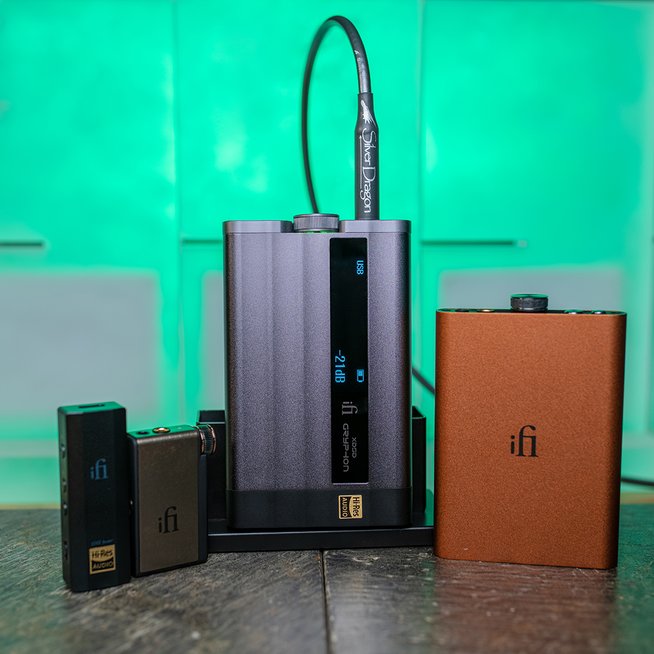
Popular Questions about Digital-to-Analog Converters
Question: What is a DAC?
DAC stands for Digital to Analog Converter. It's a component - in your phone, laptop, tablet, audio device - that processes the digital data of your music and converts it to an analog signal. Once it has been converted to an analog waveform, you can send that to your amplifier and play the music on a speaker or headphones. Think of it as a translator. It's just taking that data and translating it to an analog signal that you can hear.Question: How does a DAC work?
A DAC is essentially the Google Translate of your audio system. Apart from physical analog media like vinyl and tape, most music today is digital. Just 1s and 0s. And since our ears cannot hear digital data, we need a method of converting these 1s and 0s to an analog format so that it can produce sound waves and thus we are then able to hear it. The digital-to-analog converter does just that: converts the digital data to an analog signal. It takes those 1's and 0's and tracks them to a waveform pattern. To do this, it converts the bits of data from the stored files into an analog electrical signal at thousands of set times per second, called samples. The DAC outputs these samples into a waveform that intersects at all the sample points. However, problems can arise in the conversion process which as we will see later can set some DACs apart from each other. It's an integral part of your system that you can't do without - especially if you have a digital music library.Question: Why do we convert digital to analog?
The basic fact is that our ears are not designed to “hear” data. It's impossible. We can only hear analog signals like sound waves and vibrations, coming from an amplified source through the air. Therefore, we need a device that converts this data into an analog signal. The other factor has to do with the fact that most music today is recorded digitally. This means that the analog signals coming from the instruments and voices being recorded are stored digitally onto computers, mixed and mastered, and then optimized for digital mediums such as compact discs or online streaming and downloading. Analog media, like vinyl and tape, is making a comeback, but still, the majority of music and access to music out there is digital, and ultimately you need something to convert that data before you can hear it.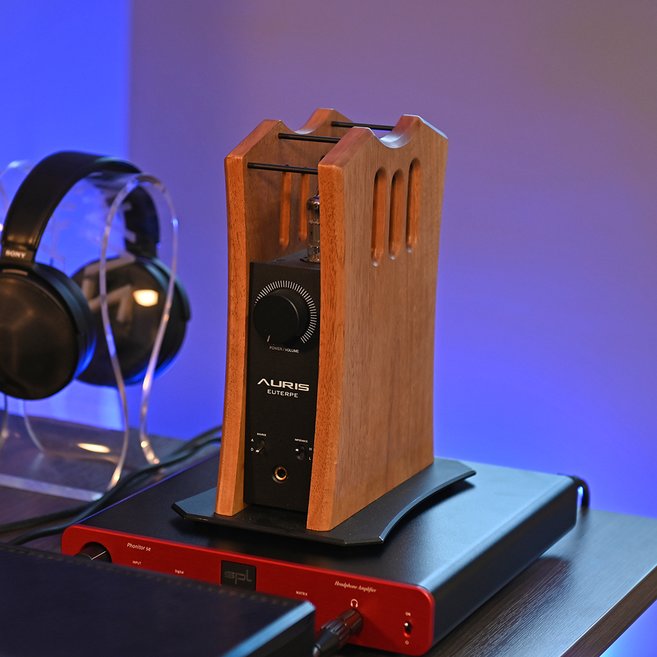
Question: What makes a good DAC?
The quality of the converter chip doesn't necessarily play the biggest role in determining how "good" a DAC is. In fact, the overall audio signal path needs to be considered if we're specifically talking about the "sound quality" of a DAC. That being said, off-the-shelf factory DAC chips - like in your phone - are not very efficient or accurate at converting the data, so the result is a fair presentation of the music, but it leaves much to be desired. A good DAC chip converts the data efficiently and accurately, so that all the information in the data is transmitted to the analog signal. More data points result in a smoother waveform, thus resulting in more natural audio quality. Having multiple DAC chips can also make a difference in the effectiveness of the data conversion that is outputted. Higher-end DAC chipsets are usually Cirrus Logic, ESS, AKM, or Burr-Brown (of course there are others, but these are some of the most popular on the audiophile market). Some DACs themselves - if we're talking about the device alone - might not even use a proper off-the-shelf chipset. Chord DACs use FPGA and their own proprietary algorithms - and they sound phenomenal. This is another reason that you can't simply look at the chipset (or lack thereof) to determine if a DAC is good or not. You have to look at the complete picture, or in this case, the whole audio circuit or architecture from start to finish.Question: What kind of DACs are there and what would I need?
DACs also come in various configurations, like standalone, or combined with streamers, or servers, and more. You have your Qutest DAC – which is a standalone unit – just the DAC – and our most popular DAC that we sell here at Moon Audio. Next is something like the Bricasti M3, which is a DAC combined with a headphone amplifier. Then you have devices like the Uniti Atom HE, which combines the DAC, a headphone amplifier, and a streamer. And lastly, there is the Aurender A20 – which Is a DAC, Headphone Amp, Streamer, and Server – complete with internal storage for your personal music library.
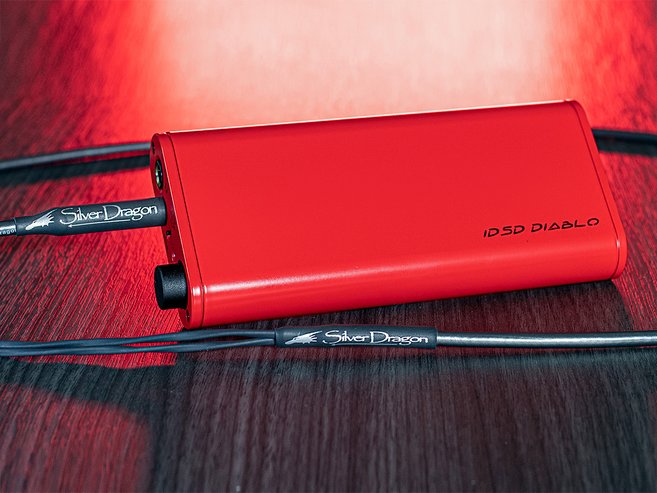
Question: Does an external DAC make a difference?
Question: What devices do NOT need DACs?
Question: Do I need a DAC for my DAP?
You will not need a DAC for your DAP, or Digital Audio Player. Most digital audio players come equipped with a high-end digital-to-analog converter, which is attributed to the premium cost of the device. However, upgrading from a Stereo Receiver to a separate Preamp and Amplifier can elevate the sound performance of the system, and so too can using the DAP as a digital source and adding a higher-performance DAC. For example, if you own the Astell & Kern SR35 you can use it as the digital source with the Chord Hugo 2. The Hugo 2 provides a superior sound over just the SR35 by itself, so pairing the two together would result in better sound, but it's not necessary as the DAP already has a high-end DAC chip in the audio circuit.
Question: Do I need a DAC or an Amplifier?
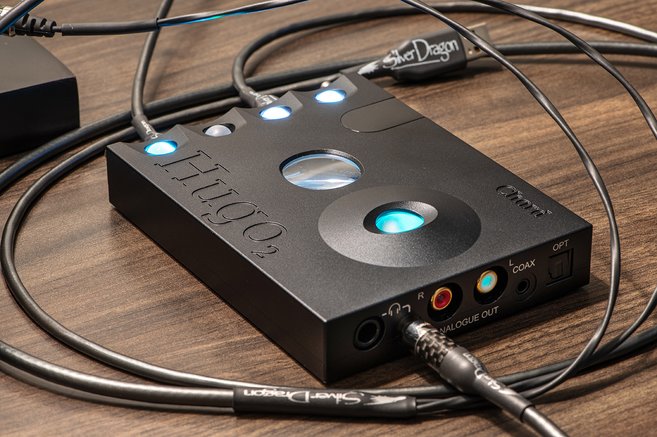
Question: What is the best DAC?
Picking a Source Device
PHONE
If you're planning on using your phone, you have the option of playing music locally that's stored on your device or streaming apps. There are a ton of streaming services out there, and more and more options for high-resolution music. You'll get the most from your phone by connecting a dongle DAC or a USB DAC via USB C or lightning, whatever connection your phone has. Dongle DACs are simple - pretty much just plug and play and you're good to go. The phone should automatically detect the DAC when you plug it in and set it as the main audio output. The same goes for tablets, or even a laptop. Depending on if you have a Windows PC or MAC, you might require some additional configuration and driver installation steps to get it to recognize your DAC and set it up as your main audio out, but that's a conversation for another day. We'll put a link below on how to set up and configure your DAC on your computer.

COMPUTER
What if you want to set up a DAC with your computer? You have a few more options in this department - based on what kind of connection you want to use. Since most will interface via USB C, you can use a dongle DAC if you want something small, a USB DAC if you want more features, or a desktop DAC for the full experience. Now there are standalone DAC cards for PCs via PCI connection or high-end audio cards which basically do the same thing and provide various output options for connections to speakers or whatever. That being said, in most cases, the DAC will interface with your computer via the USB connection. The same options apply on the computer - you can either listen to music from your local library or stream from installed apps from the PC. You're using your computer as the source for your music to the DAC in this case, so that's where the DAC will be doing the conversion.
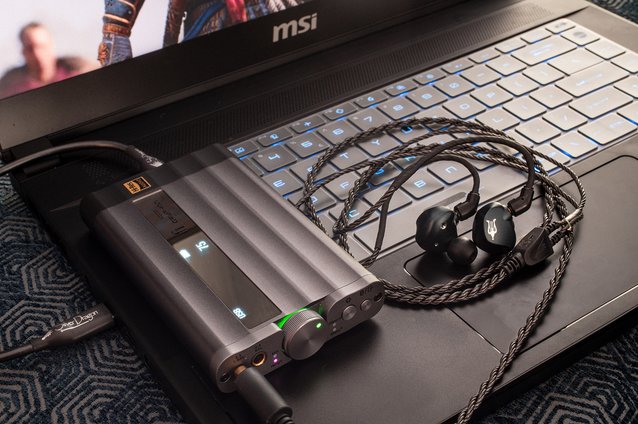
PHYSICAL MEDIA
Say you have some physical media like a CD. Then Cayin's CD transport, the Mini CD-MK2 is a really cool option. It has a built-in, high-end DAC chipset and also does upsampling, so if your source is your huge collection of compact discs, then don't worry - they're not obsolete. People STILL make CD players, they're just a lot better now. If you're a fan of Roon, then you could use your computer as a core, with your music library installed locally, or you could add the Roon Nucleus as a dedicated core. Why would you use the Nucleus? Well, you always have to log in when you're using your computer, shut down, start up, login, etc. The Nucleus stays on all the time - and secondly, it's a designated device to store, process, and playback your music. Computers can be noisy, slower, draw more power, and they don't sound as good.

NETWORK DACS
Network-connected DACs are great options - since they can connect to a Roon core, a computer, any source really - and they don't have to be physically connected to that device. You can even use your laptop, iPad, phone, whatever, as a remote control in some cases. If you really want to up your game and get the best of the best you can use something like an Aurender streamer. Aurender and dCS make some of the best all-in-one units that do everything - high-end DACs, streamers, amplifier, and they even have their own proprietary software for streaming music, cataloging, and playback. You get some high-end functionality and features when you go down the network DAC rabbit hole, but beware, they can also get pricey.
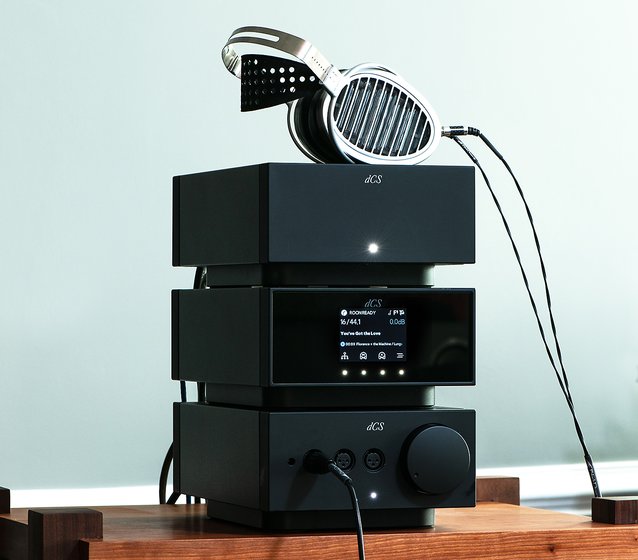
DAC CONNECTIONS
Now, when it comes to connections and how to set up your DAC, I'll just say a quick note here about connection hierarchy. Here are some common DAC connection ports and the order in which you should use them for the best audio quality - starting at the best and going down: I-squared S, AES,/XLR, SPDIF - either RCA or Toslink - and finally USB. Again - this is the order in which we'd recommend prioritizing the connection options if you're looking for the absolute best sound quality out of your system. I won't get into specifics here, but know that DACs will come in various I/O configurations, so just something to keep in mind.
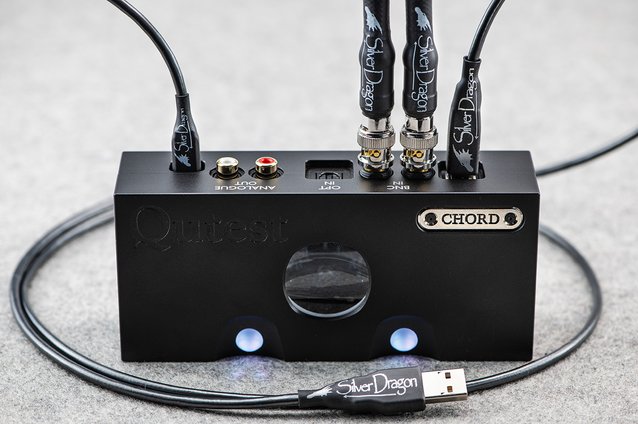
Understanding DACs in a Signal Chain
DACs and Ergonomics
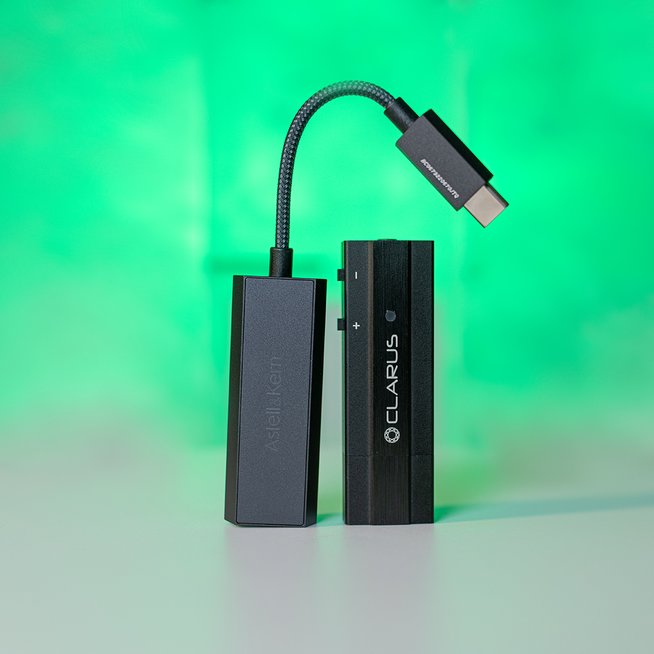

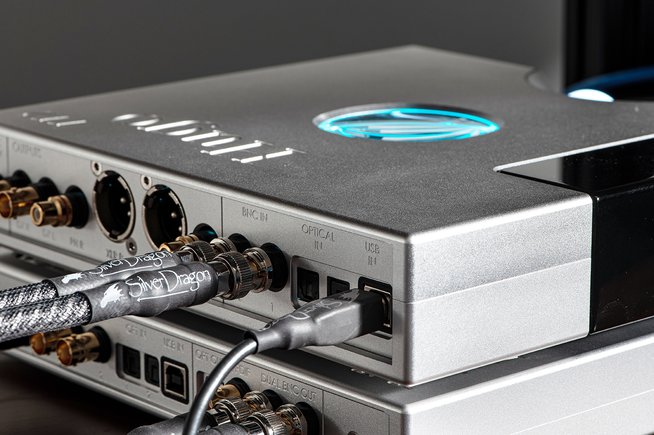
Ergonomics are going to be important things to consider when figuring out what the best DAC for you is going to be because they are designed for the specific way you like to listen to music. Sure you can spend thousands of dollars for one of the most amazing desktop DACs on the market, but if you travel a lot for work and you're hardly at home to listen to it, then perhaps a different DAC would have served you better. Keep this in mind when you are considering a DAC purchase: where do you like to listen to your music? What source are you going to be using for your music library? If your phone is your primary source of local and streaming libraries, then you're going to want to consider a smaller, portable DAC that you can connect directly to your phone. Maybe you have some harder-to-drive headphones that you like to take with you - that is going to make the difference between choosing a dongle DAC and a larger, more powerful USB DAC that can adequately drive your favorite cans. There are lots of factors that go into play here, so take your time and consider all your options.
Our Favorite Dongle DACs
Clarus Coda - it's a nice and robust size, much like a flash drive, and similarly, it has a cap that covers the USB type A connection. It also comes with an adapter for USB C connection and it has a simple 3.5mm unbalanced headphone jack on the back. It can drive most headphones well, and it has a nice detailed, and balanced signature. A big plus here is the physical volume up and down buttons on the side that also double as filter selections. The CODA has always been a great seller and I'm a big fan of the robust sound this thing can produce, especially when connected to my laptop, which I do quite a bit.
Our Favorite USB DACs
The iFi Audio Go Blu might be one of the most versatile DACs here, as along with Bluetooth capability, wired connection options, a built-in microphone for taking calls when connected to a phone, it's a lot like a Swiss army knife. Both balanced and balanced headphone jacks, and a dedicated volume knob. It's somehow packed with all these quality features at a super low $199. It's one of the only DACs you'll find on the market with a microphone, and combined with hi-res BT codec options, the super-small size, and an eight-hour battery life - there's no reason why you shouldn't have this in your audiophile-to-go bag.
Our Favorite Desktop DACs
Types of DACs
One thing I really wanted to get into when I started the FAQs on DACs series is figuring out why there are different DAC types, made differently, with different components, technology, and more. Ring DACs, Ladder DACs, FPGA, resistors, off-the-shelf chips, Burr Brown, R-2R - it sounds complicated and technical. And well, it kind of is, but we're going to take a look at all these types and make it easier to figure out just HOW they're different.
Digital to analog converters can be created a number of different ways, and lots of times brands adopt a technology based on how it configures with their design process and overall sound they want to tune for their audio products. There are a lot of reasons why you'll find different technology in different brands, but it's all part of their audio circuit design process - how a DAC type fits into their product based on various factors like portability, power draw, and effect on battery life, and what kind of sound they are wanting to create for their product. The way you design your DAC can affect the way your music sounds - but we'll get more into that in a bit. Let's talk about about the different types of DACs out there, feature a brand, and how they adopt a specific technology for their products.
Astell & Kern - the creator of high-end audiophile-grade music players - is one of our favorite brands here at Moon Audio. They do portable high-res audio right. We talk about them a lot in our product reviews, but Astell&Kern likes to use off-the-shelf chips for their audio circuit design. These chips represent a perfect combination of small size for portability, power efficiency for extended battery life, and high-quality performance for audiophile-grade sound reproduction.
When we call them DAC chips in this case, they are just that: computer chips where all the digital-to-analog processing gets done. One chip that does it all. Astell&Kern uses a variety of off-the-shelf chips in their music players, and sometimes in various configurations - pairing chips in dual DAC, quad-DAC, or even HEXA-DAC circuit design. This can improve the overall audio quality and resolution of the audio on playback.
Astell&Kern designs their a&Norma product line of entry-level DAPs most commonly with Cirrus Logic DAC chips. These are more affordable and extremely power-efficient converter chips. They provide outstanding clarity and detail in AK's music players, resulting in great battery life as well. Going up the ladder to Astell & Kern's a&Futura line, you'll often find ESS DAC chips. ESS SABRE DACs are known for more detail, depth, and resolution than a lot of Cirrus Logic chips. You'll notice a definite bump in audio quality to be sure. ESS chips in general are great for more analytical listeners who like to pick up on every detail of the music. We finally come to Astell & Kern's a&Ultima line of premium Flagship music players. AK likes to use AKM DAC chips in their premium offerings, resulting in more full-bodied, musical presentations. This is a great option for those who love to get lost in the music. Astell&Kern even has music players now that utilize multiple chip manufacturers - like in their HEXA-DAC circuitry which uses both ESS and CL DAC chips. All the products we carry here at Moon Audio that utilize chips all use reputable chip manufacturers: ESS, AKM, Burr Brown, and Cirrus Logic. They are highly recommended as audiophile-grade DACs and will provide leaps and bounds over your consumer-grade converter.
I'll make a quick mention of iFi Audio here as well, which uses Burr Brown chipsets in their portable DACs across the board. iFi Audio is a great brand offering a lot of affordable DAC options for just about every listening and ergonomic scenario out there. Their Burr Brown DACs are implemented in a way that provides a perfect balance of efficiency for their devices and a robust and full sound. They're more on the natural-sounding side when compared to Astell & Kern's more analytical signature.
The way Astell&Kern and iFi Audio design their products, the chips are not the only part of the equation when it comes to how a device will sound, but they certainly give an indicator of the sound characteristics and sound capabilities of the music player. The entire audio circuit from input to output is considered when determining the tuning and sound of the device when it's created, so the DAC chip should only be used as one of the larger pieces of the sound signature puzzle.
dCS is another brand at Moon Audio that takes a very different approach to designing their digital-to-analog converters. They use what is known as a Ring DAC for their high-resolution desktop DACs, and we'll see just how dCS' approach aims to address issues with common ladder DAC design (see more about ladder DACs below).
Resistors (like all electronic components) have an element of error in their values. For resistors used in a ladder DAC, the current generated by that section of the DAC could be lower or higher than needed. This, plus another issue with ladder DACs called Zero Crossing Point Distortion, leads to linear distortion in ladder DACs. A key point here is that the ladder DAC removes the link between the original signal and the physical resistor value errors associated with specific sample values.
dCS' proprietary Ring DAC technology is at the center of the LINA audio system and standalone DAC. Instead of using off-the-shelf DAC chips, dCS builds its Ring DACs from the ground up. One of the key advantages of the Ring DAC is its upgradeability via firmware updates. The Ring DAC uses a network of FPGAs (field programmable gate arrays) that are running proprietary dCS software that controls the digital-to-analog conversion process as well as digital filtering.
At first glance, the Ring DAC may look like a ladder DAC. There is a latch and a resistor for each current source, and these current sources are fed to a summing bus. The main difference is that the Ring DAC uses current sources of equal value; this is known as "unitary weighted" or "thermometer coded" DAC architecture. Furthermore, the Ring DAC does not use the same current source for the same bit every time. The Ring DAC is based around a set of latches, all of which are turned on and off at high speeds to produce an equal amount of current. The FPGA - or field programmable gate array - on the Ring DAC uses a sophisticated mapping algorithm to turn sources on and off in such a way that any component value errors are averaged out over time.
Because any combination of current sources can be fired for any bit in the Ring DAC, the error generated is unrelated to the audio signal; it is de-correlated. This means that any errors are randomized and converted to white noise. This approach reduces distortion, or noise, to minuscule levels, and allows low-level details that are so important in our appreciation of music, to shine through.
Speaking of FPGA, let's talk about Chord Electronics. The thing that sets Chord DACs apart from the crowd is their proprietary FPGA (Field Programmable Gate Array) which is the major component of the quintessential Chord sound. The FPGA isn't the DAC itself but rather allows the DAC to run very high-performance oversampling filters. We call these taps, and Chord primarily measures their DAC performance by tap number. A normal off-the-shelf chip like ESS or Cirrus Logic only has a couple hundred taps at most. Chord's flagship DAVE DAC and Headphone Amplifier, in comparison, has a whopping 164,000 taps.
So what's the deal with the taps? Essentially, these performance filters enable the DAC to more accurately track and reconstruct the original waveform of the audio. These are algorithms built by Chord's lead designer Rob Watts, and they can/could be updated through firmware updates - resulting, in theory, in better performance upgrades without having to get a new device. Chord doesn't do this, but there are companies that do, like PS Audio and dCS mentioned in the previous section. The popular Mojo 2 DAC and headphone amp was a major upgrade over the original, with newly improved and updated FPGA code. The original Mojo had 38,912 taps whereas the Mojo 2 has 40,960. More filter taps mean closer to the original audio of the recording. It all has to do with the modulation between frequency response and the noise level in the unit. As you increase the volume and the freq. response, the noise floor adjusts with that volume. The Mojo 2 has dramatically improved the coding to do this more efficiently and accurately. It also has better filtering, with 40 DSP cores for better transparency (this is a larger influence on the sound quality than the increased tap number).
R-2R, or ladder DACs, are just another way of doing conversion. In a ladder DAC, one current source is always working for one of the digital audio bits exclusively. Think of it this way: One current source will always be following what the first bit in the digital signal is doing, and so on, for as many current sources as are needed. As the current sources go on, the amount of energy they must generate gets smaller and smaller. If you look at a diagram of this process, it will resemble a ladder.
Cayin is a popular brand that implements ladder DACs in many of its devices, resulting in astounding audio quality at affordable prices. One of our favorite audiophile devices here at Moon Audio is the RU6 portable USB DAC/Amplifier dongle. The RU6 implements an R-2R ladder DAC for its conversion. The basic idea here is a matched pair of two resistors, the first is "R" and the other is "2R" which has twice the value of R. To achieve 24bit R-2R decoding, you need 48 resistors for one channel or 96 pieces of high precision resistors for stereo. R-2R is famous for its natural and realistic sound signature.
When it comes to the sound of the DAC, ladder DACs and Ring DACs tend to sound more analog because they're using resistors. They're using an analog signal path to do the digital-to-analog conversion. These are important aspects to think about when selecting a DAC or device because it will be more in line with your personal listening preferences. For people who want an analog sound that has a little more body to it, a R-2R DAC would be a great option to consider. If you want a music player with R-2R architecture then take a look at the Astell&Kern SE300 - it's a great DAP that allows the user to listen to their music the way they want - with tons of sound customization, features, and premium sound quality.
Final Thoughts
There are a couple of things to keep in mind with different DAC technology. First: No DAC technology is perfect or better than the other. Sure, you'll have people out there who swear Ring DACs are superior to Ladder DACs. To that person - Rings DACs might sound better - because remember, we all hear differently. The second thing to reiterate here is that DACs are only a piece of the audio circuit puzzle. They do not indicate how the device will sound in totality - you have to consider other aspects like the analog output stage, the length of the circuit, and more. Things like balanced versus single-ended, transformers, resistors, op-amps, and tube-based analog output stages can play a tremendous role in the coloration and sound signature of a device - sometimes way more than the DAC itself. Before people started messing with FPGA, there were all kinds of different output stages on DACs - that was the thing to do at the time because you were limited by what was available with off-the-shelf chips. No one had created their own true DAC implementation outside of those chips. So people played around with the output stage - solid state, tube, or transformer. Those are really the three primary output stages on a DAC, and you can get a lot of tonal variation from each.
Is one DAC technology better than another? When you're doing your own research, remember that everyone is right and everyone is wrong. There is no perfect answer and it's all subjective. Use YOUR ears to determine what sounds best for YOU - everyone hears differently. Don't use measurement graphs except to get initial impressions. Things like higher bit depths, bit rates, sample rates, lossless formats, and more will make a much larger impact on the quality of your audio data/audio files. Typically speaking standalone DACs or external DACs perform better than built-in DACs or mass-produced off-the-shelf chips, but making sure your DAC is hi-res capable is just as important.
One other very important piece of all this that we have not touched on - and we'll get more into another day - is the topic of the analog output stage that comes after the D to A processing. This can dramatically change the tonality of the DAC. While we can summarize certain DAC chips to have a certain coloration one thing a lot of folks are not looking at is this output stage. You can have a solid-state output stage or a tube output stage. With tubes, you can dramatically change the sound with a tube role. And let's not forget about replacing the entire output stage with a high-quality output transformer. We used to do a mod to the Brand Original on their CD player whereas we used Lundahl Output transformers. Talk about a transformation in sound!
The digital-to-analog conversion stage is incredibly important in your hi-fi system - especially with the rise of digital music streaming - and everyone does it a little differently. Knowing a little bit more about how the technology works should allow you to look at the entire audio circuit with more clarity, and ultimately help you figure out what kind of DAC you like, or what kind of audio gear you want.
Featured Products
Related Videos
FAQs on DACs, Ep. 1: We Answer Your FAQs on DACs
FAQs on DACs, Ep. 2: Which DAC to Choose?
FAQs on DACs, Ep. 3: MUST-HAVE Dongle DACs for Music Lovers
FAQs on DACs, Ep. 4: These USB DACs Will Up Your Audio Game
FAQs on DACs, Ep. 5: Top Tier Desktop DACs for Diehard Audiophiles
Top 5 Desktop DACs for 2023
Best Portable DACs of 2023
Best USB DACs of 2022
Frequently Asked Questions About DACS
External DACs, or Digital to Analog converters, are an essential part of your audiophile setup. They help process your digital music at a higher level of performance compared to an all-in-one device such as your phone or computer (see “What is a DAC?”). Most of your electronic devices have built-in DACs already. In a device like your smartphone, where it can do a million-and-one things, having to convert your digital signal to analog is an afterthought for many phone manufacturers, and they often include subpar converters. Having a standalone DAC is preferred because that DAC is created to do one thing only: to be the English to Spanish translator, or in this case, convert your digital signal to an analog one. That is why external or standalone DACs will always sound better than the factory or stock internal options on most consumer devices.
DACs, fortunately, come in many shapes and sizes. Portable variations are much smaller than their desktop counterparts, but provide just as good performance and either run off an internal battery or USB power if connected to a computer or device. Chord Electronics is a very popular brand that specializes in both portable and desktop digital-to-analog converters. The Chord Mojo is probably one of the best and most versatile options when it comes to portable DACs. iBasso is another great brand that makes portable DACs.
There are a number of brands that make some remarkable desktop DAC components. Chord Electronics, Matrix Audio and Bricasti Design are the top branded DACs that we recommend for home system use. For more technical information on how digital-to-analog converters work, head over to our “What Is A DAC” page.

